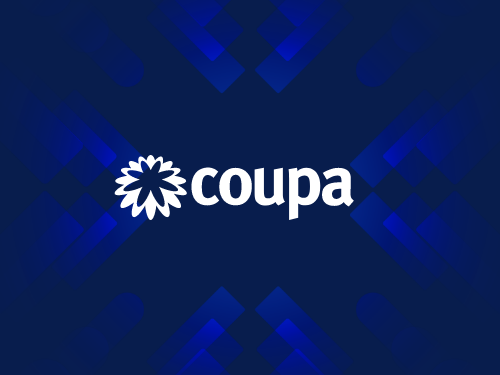For decades, search engine optimization (SEO) has been the cornerstone of digital visibility. Brands climbed the SERP ladder by fine-tuning keywords, metadata, backlinks, and technical performance. But as we enter a new era of information retrieval, one thing is clear: search is no longer just about search engines—it’s about AI.
From ChatGPT to Gemini, Claude to Perplexity, Large Language Models (LLMs) now answer millions of queries daily. Users aren’t clicking links—they’re receiving summaries. For marketers and content creators, that’s both a threat and an opportunity. The new challenge? Becoming the source behind the AI answer.
Enter LLMO and AEO—two game-changing approaches to digital strategy that help ensure your content surfaces in this AI-first discovery landscape.
What Is LLMO? Understanding Large Language Model Optimization
LLMO stands for Large Language Model Optimization—the practice of crafting content that LLMs can read, understand, trust, and surface in generated outputs. Unlike traditional SEO, which optimizes for web crawlers like Googlebot, LLMO focuses on the way AI models digest and regenerate language.
LLMs don’t operate like search engines. They don’t “rank” content by authority alone. Instead, they:
- Interpret semantic meaning
- Generate answers based on contextual reliability
- Use natural language understanding to surface the most helpful response
- Rely on internal training data and real-time search tools to cite sources
If your content isn’t readable, factual, and structured in a way that an LLM can parse, your brand may never make it into the answer—even if you’re ranked #1 on Google.

What Is AEO? Introducing Generative Engine Optimization
Answer Engine Optimization (AEO) is the practice of optimizing for AI-based search engines and conversational platforms. Think of it as the evolution of SEO, reimagined for tools like:
- Perplexity (which cites sources in responses)
- You.com
- ChatGPT with browsing
- Google SGE (Search Generative Experience)
Where SEO is about being ranked, AEO is about being referenced.
These AI engines often quote, link to, or paraphrase content. AEO helps ensure your brand’s content is:
- Discoverable by AI crawlers and retrievers
- Structured for AI citation and reference
- Trusted as a reliable source by generative algorithms
Together, LLMO and AEO form a dual-layered strategy for the future of digital visibility.
Why LLMO and AEO Matter More Than Ever
The Decline of the Click
We’ve entered the zero-click era, where generative answers mean users don’t need to click through to your website. This has profound implications:
- Organic CTRs (click-through rates) are falling
- Even top-ranking pages see fewer visits
- Users trust AI-summarized answers more than traditional snippets
The Rise of AI-Mediated Discovery
Increasingly, business leaders, researchers, and consumers are turning to LLMs for fast, conversational insight. For B2B brands especially, being included in the answer is the new mark of authority.
Visibility ≠ Ranking
It’s possible to rank #1 on Google and be ignored by generative tools—or to rank nowhere and still be quoted in ChatGPT. AEO is how you bridge that gap.

How LLMs Consume and Cite Content
To optimize for LLMs, we need to understand how they work:
- LLMs prefer clear, authoritative content with natural language flow
- They extract structured insights—especially from lists, FAQs, and headers
- They trust brands with high topical authority (frequent mentions, consistency, backlinking)
In short, LLMs reward what humans also value: clarity, expertise, and relevance. But unlike humans, they need structure and signals to understand your content’s reliability.
Core Tactics for LLMO and AEO Success
1. Create Conversational, Contextual Content
LLMs are trained on how people speak. That means:
- Write naturally, not robotically
- Use FAQs, how-tos, and question-answer formats
- Answer specific queries in plain, clear language
- Incorporate synonyms, related phrases, and user intent
Example: Instead of “Answer Engine Optimization for B2B SEO,” try “How can B2B marketers optimize their content to appear in AI-generated answers?”
2. Focus on Semantic & Long-Tail Keywords
Traditional keyword stuffing doesn’t work in LLM land. Instead:
- Emphasize search intent over search volume
- Use long-tail queries that mimic how people speak to AI
- Include variations of core terms to build contextual weight
AEO-optimized keywords:
“Cited by ChatGPT,” “content that appears in Perplexity AI,” “optimize for AI search results,” “LLMO strategy for marketing teams.”
3. Structure Content for Machine Interpretation
Just like search engines love schema, so do LLMs. Your formatting matters:
- Use clear H1, H2, H3 structure
- Break up walls of text with bullets and numbered lists
- Use tables, charts, and bolded terms for scannability
- Add schema markup (FAQPage, HowTo, Article) to signal intent
Tools like Perplexity often favor clearly segmented guides over narrative-only blog posts.
4. Build Depth, Authority, and Relevance
LLMs reference content that feels complete and authoritative. That means:
- Go deep—1,500+ words often outperform thin content
- Back up points with data, quotes, and examples
- Demonstrate topical consistency across your site (e.g., multiple blogs on LLMO, AEO, AI content strategy)
Your brand needs to sound like and act like an expert.
5. Optimize Metadata & Internal Links
AI tools ingest metadata. Be intentional:
- Write natural-language meta titles and descriptions
- Use internal links to cluster related content and establish authority on a topic
- Include descriptive anchor text (e.g., “see our guide to AI-ready content”)
This not only helps traditional SEO—it gives AI models contextual signals that elevate your visibility.
6. Citations, Mentions & External Signals
Generative models often cite based on frequency and trust. You can increase your chances by:
- Earning backlinks from high-authority sites
- Using original statistics or frameworks worth referencing
- Publishing on reputable third-party platforms (e.g., Medium, Substack, LinkedIn)
Pro Tip: AI models love linking to well-structured thought leadership—especially if it includes unique data, expert commentary, or industry frameworks.
7. Monitor Your AI Visibility
You can’t improve what you don’t measure. Use tools to:
- Search your brand in ChatGPT, Gemini, and Perplexity
- Look for citations, summaries, or paraphrased answers
- Track whether your domain is being pulled in AI overviews
As this space evolves, visibility in generative search may become a key digital marketing KPI.

What LLMO + AEO Mean for Marketers
SEO isn’t dead—but it’s evolving. Marketing teams who embrace LLMO and AEO will:
- Increase their AI-era visibility
- Reduce dependency on traditional SERPs
- Future-proof their content investments
- Position their brand as an authoritative, AI-trusted resource
In short, it’s not enough to be seen. You need to be cited. Trusted. Used.
Let’s Talk About Your AI Visibility
At Bluetext, we help brands thrive in the age of AI search. From content strategy to metadata, structure, and authority-building, we craft marketing that performs across platforms—including the ones without a click-through.
Reach out today to ensure your content gets seen, cited, and surfaced—wherever your audiences are searching.





